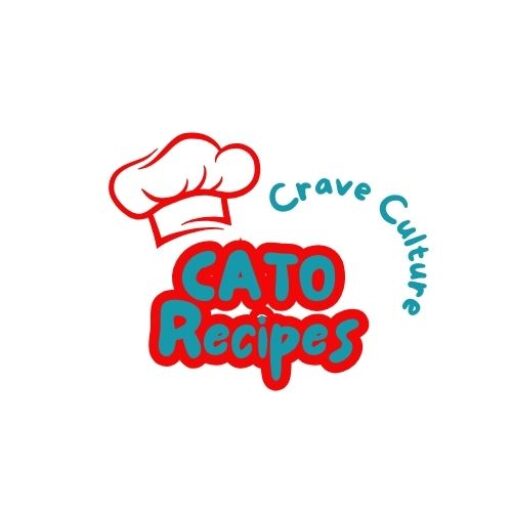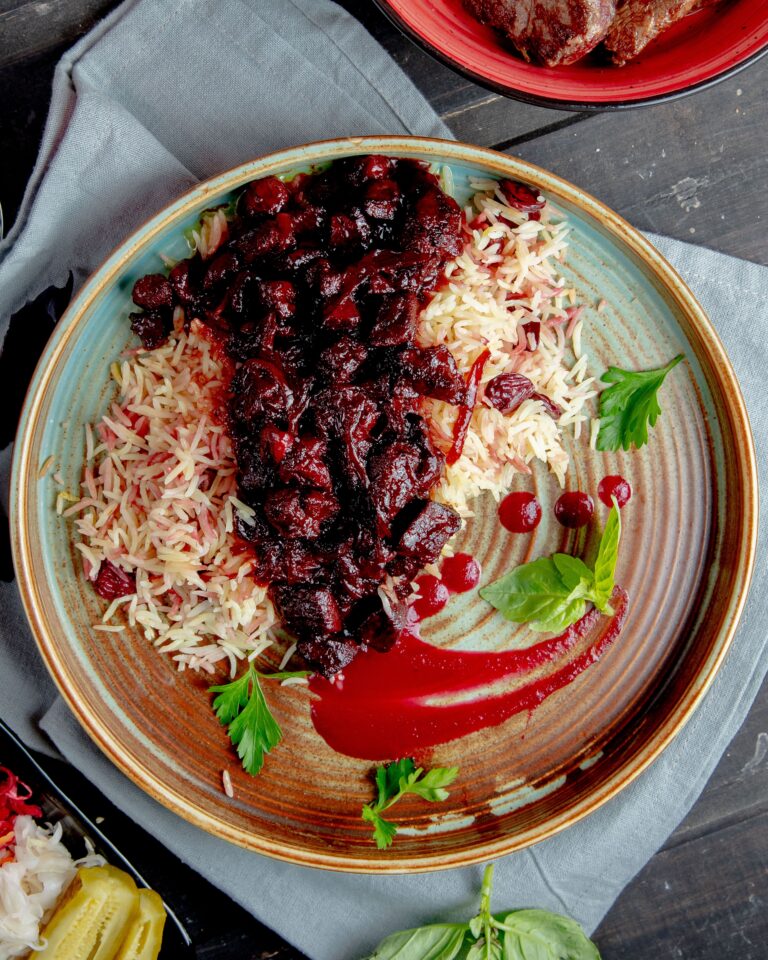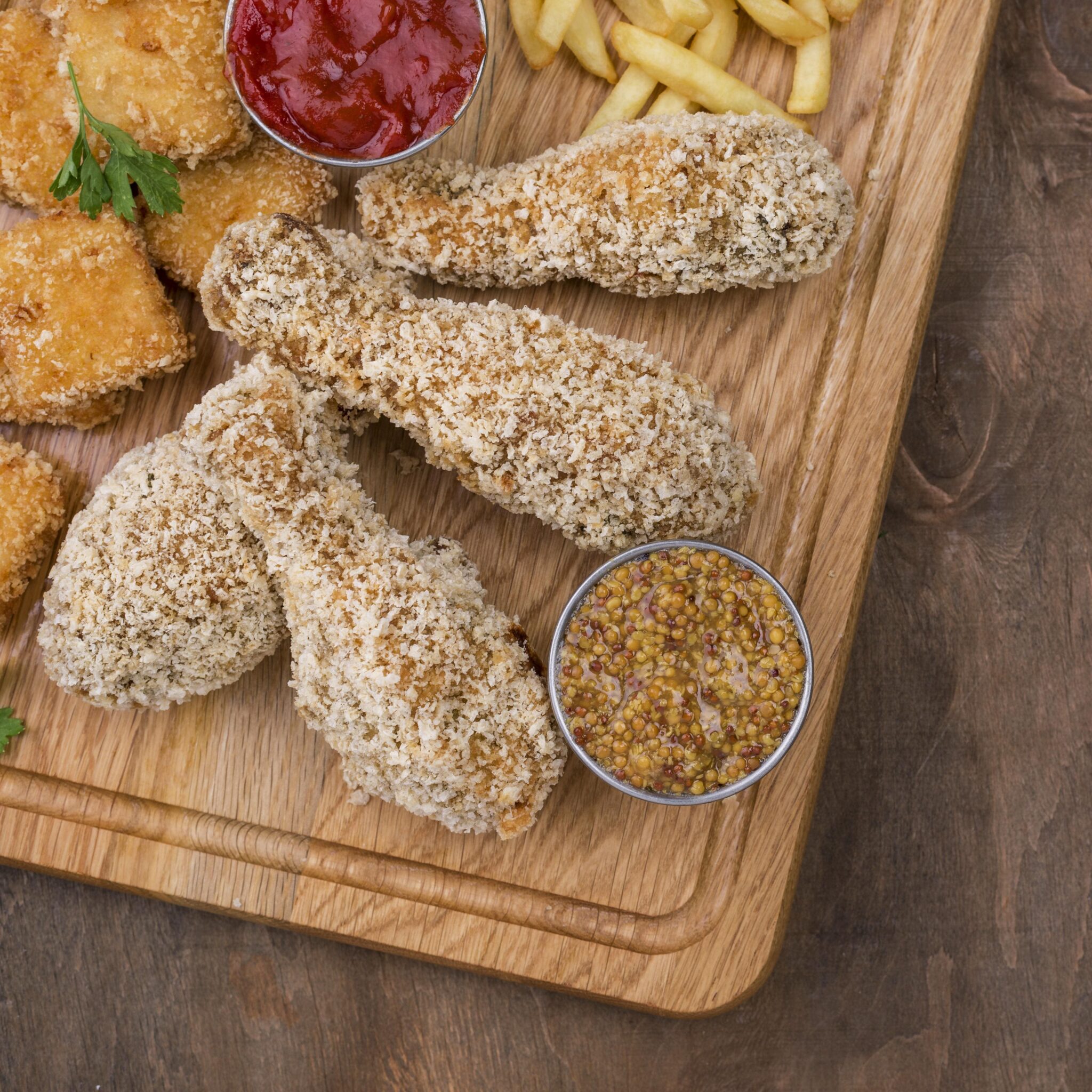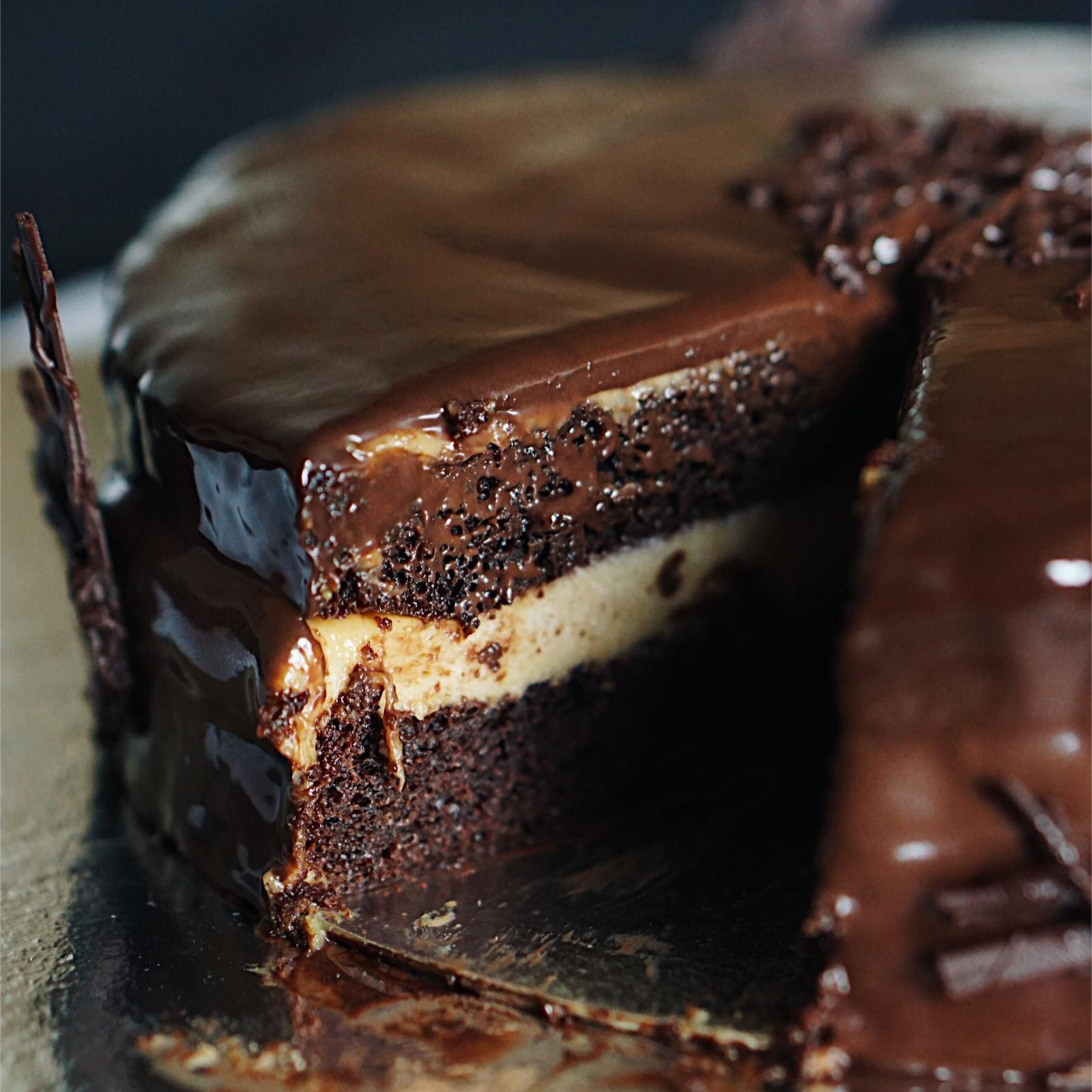Introduction
Charleston Red Rice is more than just a dish; it’s a symbol of the South’s rich culinary heritage and a beloved comfort food that warms both the stomach and the soul. This iconic rice dish, originating from Charleston and the Lowcountry region, is deeply rooted in the history of the area. Its origins trace back to the influence of West African cuisine, particularly jollof rice, which shaped many traditional Southern dishes. The Lowcountry is known for its unique blend of ingredients and flavors, as highlighted by its connection to the historic Gullah Geechee culture. Charleston Red Rice’s vibrant red hue, achieved through tomatoes and spices, makes it as visually appealing as it is delicious.
At its core, Charleston Red Rice is a humble dish that turns simple ingredients like rice, tomatoes, onions, and smoked meats into something extraordinary. The slow cooking process allows the flavors to meld beautifully, resulting in a dish that’s savory, smoky, and slightly sweet. Whether it’s served as a side at family gatherings or as a centerpiece for special occasions, Charleston Red Rice embodies the essence of Lowcountry cuisine: fresh, hearty, and deeply satisfying.
In this blog post, we’ll explore the history and cultural significance of Charleston Red Rice, delve into the essential ingredients and preparation techniques, and even share some creative twists on the classic recipe. By the end, you’ll not only understand why this dish has stood the test of time but also be ready to bring a taste of the South into your own kitchen. Let’s get started!

The History and Heritage of Charleston Red Rice
The Roots of Charleston Red Rice in Lowcountry Cuisine
Charleston Red Rice traces its origins back to the Lowcountry region, encompassing the coastal areas of South Carolina and Georgia. Its history is deeply intertwined with the legacy of West African enslaved people who brought their rice-growing expertise and culinary traditions to the Americas during the transatlantic slave trade. These traditions formed the foundation of what we now know as Lowcountry cuisine, characterized by its reliance on rice, seafood, and fresh, local ingredients.
The dish itself is believed to have been influenced by West African “jollof rice,” a one-pot dish made with rice, tomatoes, and spices. Over time, Charleston Red Rice evolved into its own unique creation, reflecting the availability of local ingredients like Carolina Gold rice—a prized variety known for its aromatic flavor—and smoked meats such as bacon or sausage, which add a distinct Lowcountry touch.
African Culinary Influence on Charleston Red Rice
The similarities between Charleston Red Rice and African dishes, particularly jollof rice, are undeniable. Enslaved Africans brought with them not only rice cultivation techniques but also the knowledge of blending tomatoes and spices to create a rich, vibrant dish. These culinary traditions melded with Southern ingredients, resulting in a dish that represents both cultural adaptation and preservation.
Charleston Red Rice as a Symbol of Resilience
Beyond its delicious flavor, Charleston Red Rice holds cultural significance as a dish that represents resilience, creativity, and the blending of African and Southern American culinary practices. It’s a staple at family gatherings, church dinners, and special occasions, cherished not just for its taste but also for the history it carries in every bite.
How Charleston Red Rice Differs from Similar Dishes
While Charleston Red Rice is a cornerstone of Lowcountry cuisine, it’s often compared to other Southern rice dishes, such as jambalaya, dirty rice, or Spanish paella. However, each dish has its own unique characteristics that set it apart.
- Charleston Red Rice vs. Jambalaya
Jambalaya, a dish with roots in Louisiana Creole cuisine, typically includes a mix of proteins such as shrimp, chicken, andouille sausage, and a variety of spices like cayenne and paprika. While both dishes use rice as a base, Charleston Red Rice leans heavily on tomatoes for its signature flavor and color, whereas jambalaya is spicier and often lacks the smoky, tomato-forward profile of its Charleston counterpart. - Charleston Red Rice vs. Dirty Rice
Dirty rice, another Southern classic, gets its name from the “dirty” appearance created by the addition of ground meats like chicken liver or pork sausage. Unlike Charleston Red Rice, it doesn’t rely on tomatoes, giving it a more savory and earthy flavor rather than the sweet and tangy notes found in the Lowcountry dish. - Charleston Red Rice vs. West African Jollof Rice
The African roots of Charleston Red Rice are evident in its similarities to jollof rice, which also uses tomatoes and spices as key ingredients. However, Charleston Red Rice incorporates Southern elements like smoked meats, while jollof rice features bold African spices and often includes fish or goat meat.
Charleston Red Rice stands out as a dish that beautifully marries African culinary heritage with Southern flavors, creating a unique offering that’s both comforting and deeply symbolic of its cultural origins.
Key Ingredients for Authentic Charleston Red Rice
The Must-Have Ingredients
At the heart of Charleston Red Rice lies a simple yet carefully balanced combination of ingredients that come together to create its iconic flavor and texture. Each component plays a crucial role in making this dish a standout in Lowcountry cuisine. Here’s a breakdown of the must-have ingredients:
- Rice
The foundation of the dish is long-grain white rice, which holds up well during cooking and absorbs the flavors of the spices and sauce. For the most authentic experience, Carolina Gold rice—a heritage variety with a nutty aroma and fluffy texture—is often preferred, though standard long-grain rice works well as a substitute. - Tomatoes
The vibrant red color and tangy-sweet flavor of Charleston Red Rice come from tomatoes. Canned diced tomatoes or tomato paste are commonly used, providing richness and a concentrated tomato essence that coats the rice beautifully.
Why Tomatoes Define the Dish
Tomatoes are the defining ingredient of Charleston Red Rice, providing the dish’s signature color and a bright, tangy flavor. Cooking down the tomatoes with aromatics and seasonings creates a rich sauce that binds the rice and other ingredients together, ensuring a harmonious blend of flavors.
Smoked Meats: The Backbone of Flavor
The inclusion of smoked meats like sausage or bacon gives the dish its signature smoky, savory notes. Andouille sausage is a popular choice, but any flavorful smoked sausage or thick-cut bacon will work. These ingredients infuse the dish with depth, balancing the sweetness of the tomatoes with a rich, meaty flavor.
Seasoning Secrets
Key seasonings include salt, black pepper, garlic, and sometimes a hint of cayenne pepper or paprika for mild heat. A touch of sugar may also be added to balance the acidity of the tomatoes. Layering the seasonings throughout the cooking process ensures every bite is flavorful.
Substitutions and Dietary Adjustments
While Charleston Red Rice is traditionally made with smoked meats and white rice, there are plenty of ways to adapt the recipe to suit different dietary preferences or health considerations without compromising too much on flavor.
- Making It Vegetarian or Vegan
- Replace the smoked sausage or bacon with plant-based alternatives, such as smoked tofu, tempeh, or vegan sausage.
- For a smoky flavor, try adding smoked paprika or liquid smoke to the dish.
- Use vegetable broth instead of chicken broth to keep it vegan-friendly.
- Healthier Options
- Substitute white rice with brown rice or wild rice for added fiber and nutrients. Keep in mind that brown rice may require a longer cooking time and additional broth.
- Use turkey sausage instead of pork sausage to reduce the fat content.
- Gluten-Free Adjustments
- Ensure that any sausage or broth used is certified gluten-free, as some store-bought options may contain hidden gluten.
- Reducing Sodium
- Opt for low-sodium broth and use fresh or homemade tomatoes instead of canned versions, which often contain added salt.
- Control the salt level by seasoning to taste at the end of cooking.
- Adding a Twist of Vegetables
- To increase the nutritional value, consider adding diced zucchini, carrots, or leafy greens like spinach toward the end of cooking. These vegetables complement the dish while maintaining its essence.
By embracing these substitutions and adjustments, Charleston Red Rice can be enjoyed by a wider audience, ensuring its legacy as a versatile and beloved dish.

How to Make Charleston Red Rice: A Step-by-Step Guide
Preparation and Cooking Tips
Making Charleston Red Rice is a straightforward process, but attention to detail ensures the dish turns out perfectly. Below is a step-by-step outline of the preparation and cooking process:
Gather Your Ingredients
Ensure you have all the essential ingredients on hand, including rice, tomatoes, onions, bell peppers, celery, smoked sausage or bacon, spices, and broth. Pre-measure and chop your vegetables for a smooth cooking experience.
Rinse the Rice
Rinse the rice thoroughly under cold water to remove excess starch. This step helps prevent the rice from becoming sticky during cooking and ensures a fluffy texture.
Cook the Smoked Meats
In a large skillet or Dutch oven, cook the smoked sausage or bacon over medium heat until it’s browned and crispy. Remove the meat from the pan, leaving the rendered fat behind for sautéing the vegetables.
Building the Perfect Flavor Base
Sauté the Aromatics
Add the chopped onions, bell peppers, and celery (the “hol trinity”) to the pan. Cook until the vegetables are softened and fragrant, usually 5–7 minutes. Stir in minced garlic and cook for an additional minute.
Create the Tomato Base
Stir in tomato paste or canned tomatoes, allowing them to cook down slightly to concentrate their flavor. Add your spices, including salt, black pepper, and optional cayenne or paprika, to create a flavorful base.
Cooking the Rice to Perfection
Combine the Ingredients
Add the rinsed rice to the pot, stirring it to coat the grains in the tomato mixture. This step helps the rice absorb the rich flavors as it cooks.
Add the Broth
Pour in chicken or vegetable broth, ensuring the rice is fully submerged. Bring the mixture to a boil, then reduce the heat to low. Cover the pot tightly to trap the steam.
Cook and Simmer
Allow the rice to cook on low heat for about 20–25 minutes, or until the liquid is absorbed and the rice is tender. Avoid lifting the lid during cooking to maintain the proper moisture level.
Add the Meat and Final Touches
Once the rice is cooked, gently fold in the cooked smoked sausage or bacon. Let the dish rest for a few minutes before fluffing the rice with a fork. Adjust the seasoning to taste.
Secrets to Perfect Charleston Red Rice Every Time
To elevate your Charleston Red Rice from good to exceptional, consider these insider tips and tricks:
Choose High-Quality Ingredients
- Opt for fresh vegetables, flavorful smoked sausage, and a good-quality broth to ensure a rich and authentic flavor.
Balance the Tomato Flavor
- If the dish tastes too acidic, balance it with a small amount of sugar or a splash of cream to mellow out the tanginess.
Don’t Over-Stir the Rice
- Once the broth is added, resist the temptation to stir the rice during cooking. Stirring can release starch, making the rice mushy.
Maintain the Right Rice-to-Liquid Ratio
- Typically, the ratio for long-grain rice is 1 cup of rice to 2 cups of liquid. Adjust this based on the specific type of rice you’re using.
Add Depth with Seasoning Layers
- Season the dish at every stage—when sautéing vegetables, cooking the tomato base, and before simmering the rice. Layering flavors creates a more complex and satisfying dish.
Cook Slowly and Evenly
- Use a heavy-bottomed pot or Dutch oven to distribute heat evenly and prevent the rice from burning. Cooking on low heat allows the flavors to meld beautifully.
Finish with Fresh Herbs or Garnishes
- Garnish the dish with chopped parsley, green onions, or even a sprinkle of smoked paprika for added color and flavor.
Let It Rest Before Serving
- Allow the finished dish to rest, covered, for a few minutes after cooking. This helps the rice settle and enhances the overall texture.
By following these steps and incorporating these secrets, you’ll consistently create Charleston Red Rice that’s bursting with flavor, perfectly textured, and worthy of being called a Southern classic.
Variations and Creative Twists on Charleston Red Rice
Adding Seafood for a Coastal Flair
Charleston’s coastal location offers a bounty of fresh seafood, making it an ideal addition to traditional red rice recipes. Incorporating seafood not only enhances the dish’s flavor but also connects it even more deeply to its Lowcountry roots. Here are a few ways to add a seafood twist to Charleston Red Rice:
Shrimp
- Add peeled and deveined shrimp during the last 5–7 minutes of cooking. The shrimp will cook quickly and absorb the dish’s rich flavors without becoming overdone. For a smoky twist, use grilled or blackened shrimp as a topping.
Crab
- Lump crab meat adds a sweet, delicate flavor to the dish. Fold the crab in gently after the rice is fully cooked to avoid breaking up the tender meat. This is perfect for elevating the dish for a special occasion or dinner party.
Oysters
- Fresh oysters can be shucked and added to the rice toward the end of cooking. Their briny, oceanic flavor pairs wonderfully with the smoky and tangy notes of the rice.
Fish or Scallops
- Grilled or pan-seared fish fillets, such as snapper or catfish, can be served on top of Charleston Red Rice for a hearty, well-rounded meal. Similarly, seared scallops make for an elegant presentation.
Seafood Medley
- Combine shrimp, crab, and scallops for a luxurious seafood red rice dish. This variation is reminiscent of Lowcountry seafood boils and adds depth and variety to the traditional recipe.
Cooking Tip: When adding seafood, ensure that you adjust the seasoning and cooking time accordingly. Seafood cooks quickly and requires gentle handling to maintain its texture and flavor. Adding a squeeze of fresh lemon or a dash of Old Bay seasoning can further enhance the coastal flair.
One-Pot Charleston Red Rice Recipes
For busy cooks or those looking for a quick and easy way to enjoy Charleston Red Rice, a one-pot method simplifies the process while maintaining its delicious taste. Here’s how to streamline the recipe:
Simplify the Ingredients
- Use pre-chopped vegetables and store-bought broth to save time during preparation. Frozen onion and bell pepper blends can also be a convenient substitute for fresh produce.
Cook Everything in a Single Pot
- Start by browning the smoked sausage or bacon in a large pot or Dutch oven. Remove the meat, then sauté the vegetables in the same pot using the rendered fat for added flavor. Build the tomato base, add the rice, and pour in the broth—all in the same pot.
Use Precooked Proteins
- Opt for precooked sausage or rotisserie chicken for an even quicker version of the dish. Simply add these proteins during the last few minutes of cooking to heat them through.
Pressure Cooker or Instant Pot Version
- For an ultra-fast method, use a pressure cooker or Instant Pot. Sauté the vegetables and sausage in the pot, add the rice, tomatoes, and broth, and cook on high pressure for about 10 minutes. Allow natural pressure release for another 10 minutes before fluffing and serving.
Sheet Pan Variation
- For a unique twist, transfer the prepared rice mixture to a sheet pan, cover it with foil, and bake in the oven. This method frees up stovetop space and creates a slightly crisp layer on top for added texture.
Advantages of the One-Pot Method:
- Fewer dishes to wash, making cleanup a breeze.
- The flavors meld more harmoniously as everything cooks together.
- Great for meal prepping, as it reheats beautifully.
Whether you’re adding a seafood twist or simplifying the process with a one-pot method, these variations ensure that Charleston Red Rice remains versatile, approachable, and deeply satisfying for all types of cooks.
Why Charleston Red Rice Should Be on Your Table
A Dish for Every Occasion
One of the most appealing aspects of Charleston Red Rice is its incredible versatility. Whether you’re cooking for a quiet family dinner or preparing a feast for a special celebration, this dish fits seamlessly into any setting. Its comforting flavor and beautiful presentation make it a crowd-pleaser, no matter the occasion.
- Perfect for Family Meals
- Charleston Red Rice is a hearty and filling dish that can easily feed a large family. For instance, you can serve it as a main course or as a side alongside roasted chicken or grilled fish. Additionally, its one-pot nature makes it an ideal weeknight meal for busy households, providing rich flavors with minimal effort.
- A Star at Gatherings and Potlucks
- Its vibrant red hue and smoky aroma make Charleston Red Rice a showstopper at potlucks, cookouts, and holiday gatherings. Furthermore, it pairs wonderfully with other Southern favorites like fried chicken, collard greens, and cornbread. Plus, it’s easy to prepare in large batches, making it a practical yet impressive option for feeding a crowd.
- Elevate Special Events
- For formal occasions or dinner parties, Charleston Red Rice can be dressed up with premium ingredients like seafood or fresh herbs. In this case, pairing it with wine or craft cocktails can create a sophisticated Lowcountry-inspired meal that’s sure to impress guests.
- Versatility Across Seasons
- Whether served warm on a chilly winter evening or as part of a summer cookout, Charleston Red Rice transcends seasonal boundaries. Indeed, it’s the kind of dish that feels at home year-round, offering comfort, flavor, and tradition whenever it’s served.
Clearly, its ability to adapt to any meal or gathering ensures that Charleston Red Rice remains a staple in Southern homes and beyond.
Preserving a Culinary Tradition
Charleston Red Rice is more than just a dish—it’s a living testament to the history, culture, and resilience of the Lowcountry region. Cooking and sharing this dish helps keep its story alive, connecting modern kitchens to generations of cooks who came before.
A Taste of History
- The roots of Charleston Red Rice can be traced back to West African traditions brought to the Americas during the transatlantic slave trade. In fact, its similarities to dishes like jollof rice highlight the enduring influence of African cuisine on Southern cooking. By preparing and enjoying Charleston Red Rice, we honor the legacy of those who created it and the communities that have preserved it over centuries.
Celebrating Lowcountry Cuisine
- As one of the defining dishes of Lowcountry cuisine, Charleston Red Rice reflects the region’s unique blend of ingredients, techniques, and flavors. Moreover, sharing this dish introduces others to the culinary richness of the South, fostering appreciation for its diverse food heritage.
Passing It Down to Future Generations
- Teaching family members or friends how to make Charleston Red Rice is a wonderful way to pass on cultural traditions. Even though recipes may vary from household to household, the essence of the dish remains the same: a celebration of flavor, community, and history.
Adaptable Yet Rooted in Tradition
- While modern variations and creative twists are welcome, it’s important to stay true to the heart of the recipe. Thus, maintaining its balance of simple, wholesome ingredients and traditional cooking methods ensures that the dish’s authenticity endures.
A Bridge Between Past and Present
- In today’s fast-paced world, Charleston Red Rice serves as a reminder of the power of food to connect us to our roots. Therefore, preparing this dish in your kitchen is a small yet meaningful way to honor the culinary traditions of the Lowcountry and the people who shaped it.
The Best Ingredients for Making Charleston Red Rice

Charleston Red Rice is a beloved Lowcountry dish with roots in West African cuisine, offering a vibrant and flavorful combination of rice, tomatoes, smoked sausage, and spices. This blog explores its history, essential ingredients, step-by-step cooking guide, creative variations like seafood twists and one-pot methods, and its cultural significance. Perfect for any occasion, Charleston Red Rice is both a versatile comfort food and a way to preserve Southern culinary traditions. Discover recipes, tips, and more to bring this iconic dish to your table!
Conclusion
Charleston Red Rice is more than just a dish; it’s a flavorful journey through history and culture. Rooted in the culinary traditions of West Africa and perfected in the Lowcountry kitchens of Charleston, it tells a story of resilience, adaptation, and community. This dish is not only a testament to the ingenuity of its creators but also a celebration of the enduring bond between food and heritage.
The recipe’s versatility makes it suitable for various occasions, whether you’re cooking for a family dinner, a festive gathering, or even experimenting with modern variations. Its rich flavors, vibrant color, and comforting aroma bring warmth to any table, uniting people through shared traditions and memorable meals.
We invite you to bring the legacy of Charleston Red Rice into your own kitchen. Follow the steps, savor the process, and enjoy the rewarding flavors of this classic dish. Don’t forget to share your culinary creations and personal twists with friends and family. Together, let’s keep the story of Charleston Red Rice alive, ensuring that future generations can taste and appreciate its historical and cultural significance. Happy cooking!





